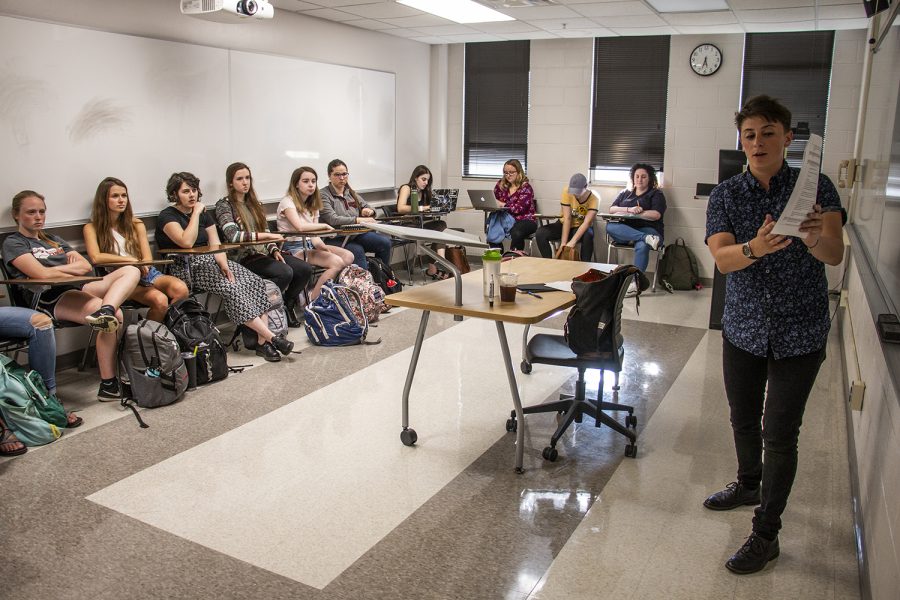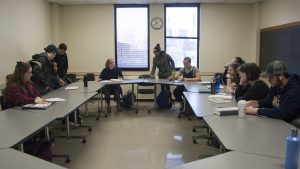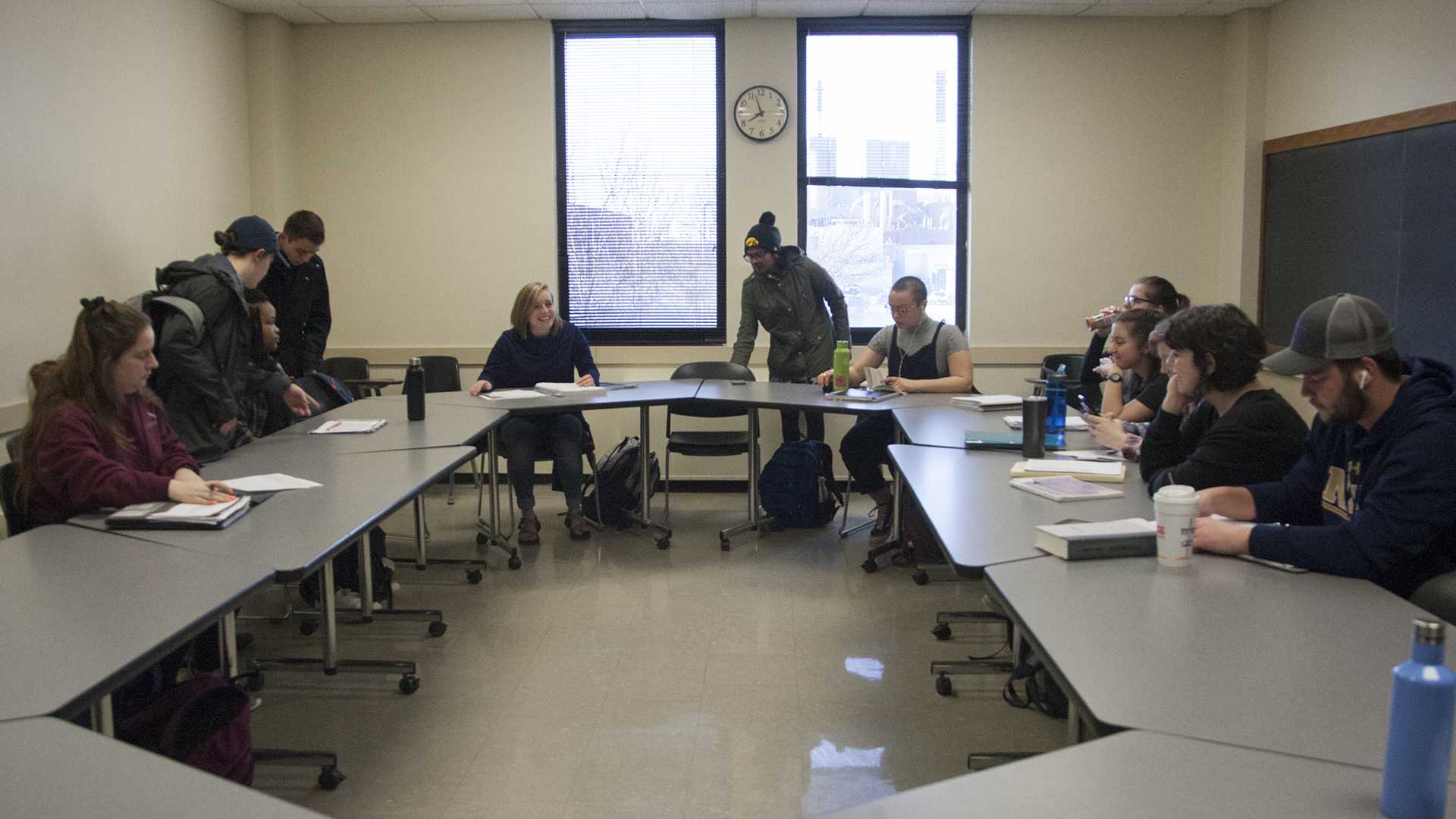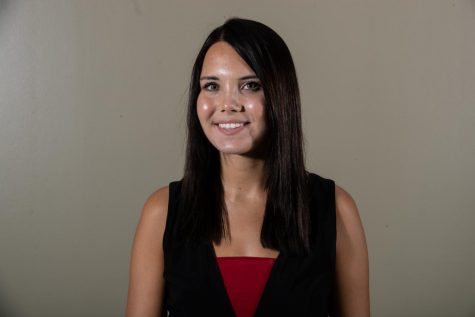UI’s Iowa Youth Writing Project reaches new heights
After becoming a fully-funded non-profit through the University of Iowa, the Iowa Youth Writing Project grows reaches new audiences and expands programs.
Students listen to instructor Sara McGuirk in the “Writing and Community Outreach” creative writing class on Monday, Sept. 10, 2018.
September 10, 2018
Funded in 2010 after UI students and teachers noticed a discrepancy between writing opportunities for adults versus children in Iowa City, the Iowa Youth Writing Project has now expanded into a fully funded nonprofit with many volunteers.
When the program started, Iowa Writers’ Workshop students and teachers went to a few schools and started doing one-hour writing workshops with students, Youth Writing Program Director Mallory Hellman said. The idea caught on and blossomed into the Youth Writing Program through a partnership with the UI Magid Center for Undergraduate Writing in 2012.
The youth program was offered a Better Futures for Iowans Grant through the Office of Outreach and Engagement. For five years, Hellman said, the grant funded such items as employment and office space. At the conclusion of the partnership, the program became a fully funded nonprofit through the UI.
“The deeper our partnership gets with the university, the more diverse populations of students we are able to work with,” Hellman said.
Becoming part of the UI has helped the program expand by reaching more undergraduate students. Students will usually volunteer for one hour each week at a site of their choice, Hellman said.
During the year, she said, K-12 students in the program participate in weekly writing activities. At the end of the school year, the students see their works published in a professionally designed anthology.
“I’m passionate about this program because I’m fairly convinced there’s no one else who does quite what we do,” Hellman said. “We go in and do these workshops. My favorite component of what we do is making our students work as public as possible.”
In addition to the anthology, she said the program also hosts annual events, including a reading at Prairie Lights in which students present their work and a Junior High Writing Conference.
While serving a variety of sites in the Iowa City area, the program focuses on children who have struggled, Hellman said. Usually, they are low-income students who otherwise wouldn’t have a creative outlet to turn to. One way organizers accomplish this is by searching for areas in which there is a large percentage of free/reduced lunch. Tate High is one of the 13 sites the program has visited. It’s an alternative high school prioritizing success for students who may have other responsibilities, such as children to care for, jobs to support themselves, or a need for a more specialized education than the larger schools in the district can give them.
Kate Richey, the instructional design specialist and an 11th- and 12th-grade English teacher at Tate, has worked with the program for six years.
“It’s been so rewarding for my students to have volunteer writers from the university or from the community who want to come in and show how writing in their lives can help sort through some of their personal issues or make sense of the world around them,” Richey said.
There are two courses offered for credit in the program, Hellman said. Writers in the Community is a seven-week, one-credit course devoted to volunteering. Writing and Community Outreach is a three-credit course in which students learn teaching strategies to carry them into the volunteer experience once a week. The course now satisfies a general-education requirement under the Diversity and Inclusion category.
UI sophomore Rebecca Jefferson began her journey with the program in Writing and Community Outreach.
“Being in college, it can be very stressful sometimes, but work with kids,” Jefferson said. “They will tell you, ‘It’s fine.’ They see the world in such a clear and uncomplicated way. You get to learn as you’re helping the children learn.”


















